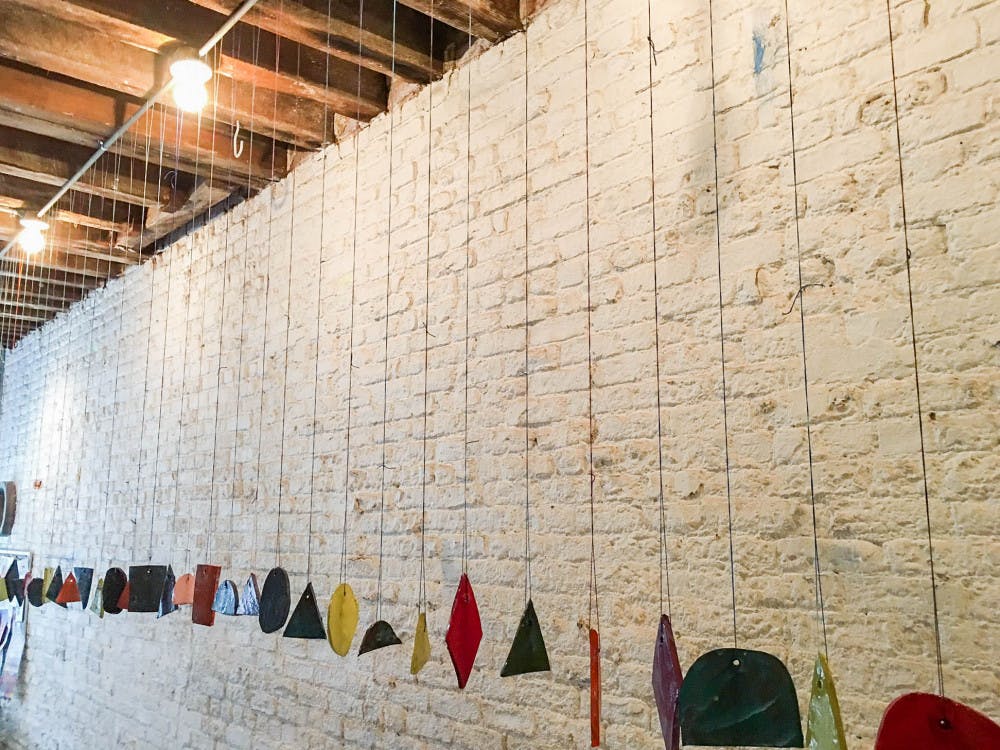The collaborative piece, “The Sound in Ceramics,” will debut in the Cohen Gallery at the Perry and Marty Granoff Center for the Creative Arts Sept. 30. It features an array of hung-up, colored shapes played with clay bead mallets created by the sculptor, Polly Apfelbaum. A musical performance by Wang Lu, assistant professor of music, and her students accompanies the exhibit and includes prerecorded background sound using the shapes and mallets.
The piece is about “discovery, exploration and improvisation,” Lu said.
“The Sound of Ceramics” is a unique collaboration — purposely disorganized, it is not meant to be viewed or heard in any particular way. “The point is participation and exploration, not about right and wrong” playing, Lu said.
The piece has many influences, including Chinese hanging bells, American traditional shape-note works and sacred harp singing. The harp singing is a folk tradition that shares the same kind of collaborative music making “not for a purpose of performance,” Lu said. “I’m not playing this as a performer; I am listening, and next time the performance will be different.”
The members of the newly formed Brown Arts Initiative — evolved from the Creative Arts Council — are enthusiastic about the new exhibit. “It’s an interdisciplinary collaborative piece and a great opportunity for (the Granoff) to show … this kind of work that is happening in classes and in students’ work that you don’t always see,” said Chira DelSesto, assistant director of the Brown Arts Initiative.
Lu and Apfelbaum originally met and became friends in Rome at the American Academy in 2012. The two began to talk about this collaboration last spring.
“I had known her work for a while, her style, her making shapes and colors,” Lu said.
The collaboration moved along quickly and smoothly. “Polly says collaboration is about her being herself and me doing my thing. … I think the best collaboration is ‘you do your thing, I do mine and let’s see what happens,’” Lu said.
The two sides came together and created a dynamic piece with vibrant shapes and piercing music that leaves a real impact on the viewer. “The ceramics, the geometrical shapes have a visceral aspect visually as well as sonically,” said Joseph Rovan, director of the Brown Arts Initiative and professor of music.
Another dimension of the work is its interactive aspect.
“We’re all composers. … The most important thing … is to explore and be curious,” Lu said.
The aura of discovery is all around “The Sound of Ceramics.” “It makes (people) think about the materials in their everyday lives,” Rovan said.
“To hear is (to) discover things — like you discover a shape when you are very small, or you discover an instrument,” Lu said.
Discovering “The Sound of Ceramics” is special, with its dual nature and combination of sight and sound.
“It’s a collaboration between an artist and a composer,” Rovan said. Collaboration like this “connects Brown with the outside world.”





